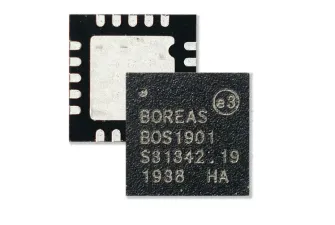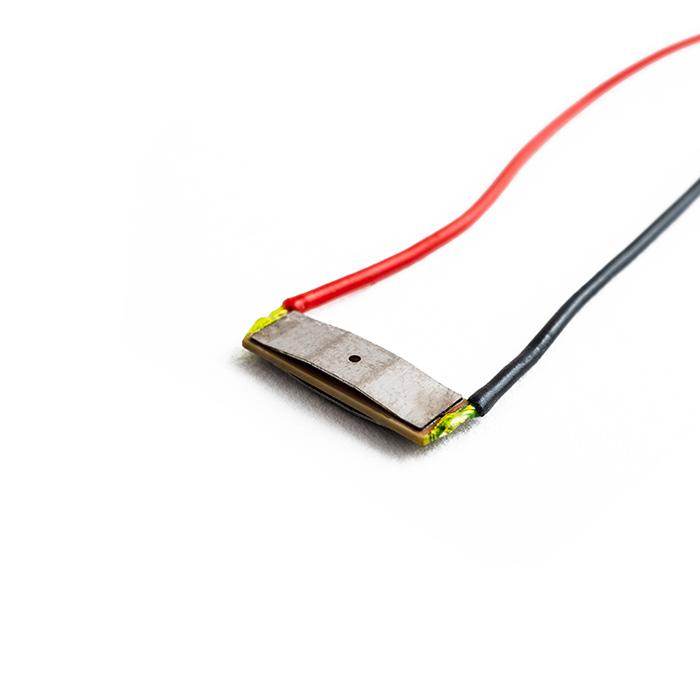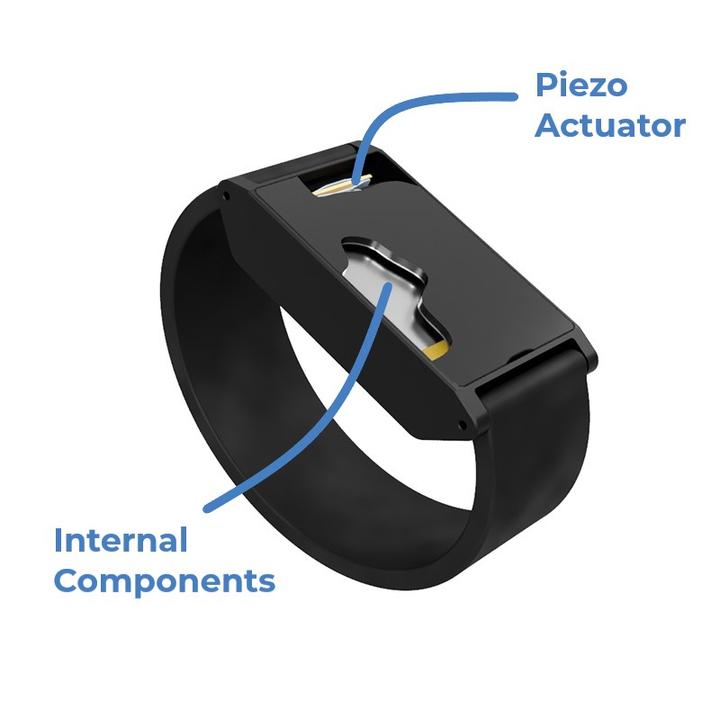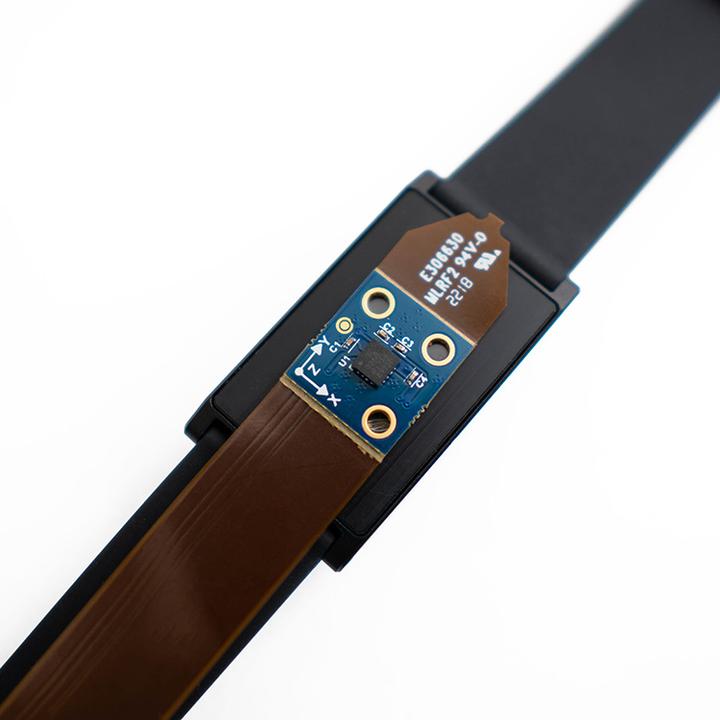BOS1901 | Piezo Haptic Driver

The BOS1901 uses a high-speed SPI in its Digital Front End. It enables the device to share a common communication bus for multi-actuator systems and the user to query various data such as the actuator voltage for sensing applications.
The differential driver achieves low distortion waveforms and quiet actuator operation. All settings are adjustable through the digital front end to reduce the BOM. Only 7 passive discrete components are required. The BOS1901 can be operated with a wide selection of commercial off-the-shelf inductors.
In systems that can’t handle reverse current flow in the power delivery network, the BOS1901 features a unidirectional power input (UPI). When the UPI mode is activated, the driver behaves as a resistive load without reducing power efficiency.
Typical start-up time of less than 300 µs makes the BOS1901 latency insignificant in most systems. Safety systems protect the device from damage in case of a fault.
TYPICAL APPLICATIONS
- Mobile Devices
- Wearables
- Keyboard and Mice
- Laptop Computer
- Gaming
- Cooling
KEY FEATURES
- High-Voltage Low Power Piezo Driver
- Drives 100 nF at 190 Vpk-pk and 300 Hz with only 350 mW
- Drives Capacitive Load up to 820 nF
- Energy Recovery
- Differential Output
- Miniature Solution Footprint, WLCSP 2.1x2.2 mm
- Small Solution Footprint, QFN 4x4 mm
- Low BOM cost
- 64 samples Internal FIFO Interface
- 1.8 V to 5.0 V Digital I/O Supply
- Fast Start Up Time, < 300 µs
- Unidirectional Power Input option
- Wide Supply Voltage Range, 3 to 5.5 V
The LRA is History. Welcome Piezo Haptics!
Enters the Boréas Piezo Haptic Engine (Boréas PHE). Our new innovative piezo haptic engine enables rich and highly detailed haptic effects that are not possible to create with legacy technologies.

How it works
Internal components in a mobile or wearable device represents a significant part of the device's total weight. Therefore, using a small piezo actuator to vibrate internal mass creates more forceful feedback than a similar-sized LRA or ERM.

Next wave of haptic experience

Mechanical Fundamentals of Piezo Haptic Actuators
Piezo haptics operates under a different mechanical concept than legacy technologies and will need a different approach to achieve a successful integration with better tactile effects. Let's see how piezo haptics differentiate themselves from ERMs and LRAs and how it will impact their integration.
You'll learn in this video:
1. Mechanical fundamentals of ERM, LRA, and piezo actuators
2. Isaac Newton's laws of motion and their impact in haptics
3. How actuator's performance is measured
4. How to take advantage of piezo haptics hardware flexibility






